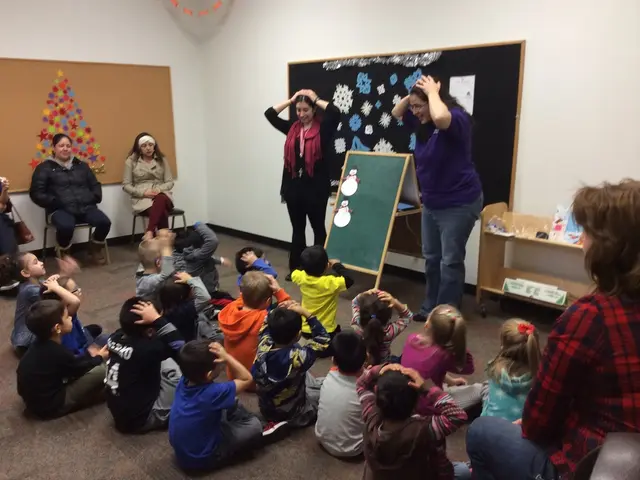Teaching Children Mindfulness Practices for Stress Management and Promoting Inner Tranquility
Mindfulness: A Powerful Tool for Children Amidst Stress and Pressure
In the hurried pace of modern life, stress has grown into an unavoidable aspect for both adults and children. Pressures from academics to social dynamics sometimes overwhelm young minds, necessitating the use of effective coping mechanisms. As parents and caregivers, it is our responsibility to supply our children with the necessary tools to navigate these stressors with confidence. One such potent tool is mindfulness-a practice that fosters awareness, presence, and inner tranquility. This comprehensive guide delves into the benefits of mindfulness for children and provides accessible techniques to incorporate mindfulness into their daily lives, enabling them to surmount stress and flourish.
In essence, mindfulness is the practice of deliberately focusing on the present moment with openness, interest, and acceptance. This entails paying attention to sensations, thoughts, and emotions without judgment, cultivating a deeper connection with oneself and the environment. Mindfulness techniques derive from ancient contemplative traditions, but their popularity has surged in recent years due to scientifically backed benefits for mental health and well-being.
The Benefits for Children: Embracing Mindfulness Early can Transform Lives
Introducing mindfulness practices to children at an early age can lead to profound and enduring improvements in overall development. Some key advantages include:
- Managing Stress: Mindfulness techniques empower children to develop strategies to handle stress and anxiety effectively, fostering a sense of calm and equilibrium.
- Improved Focus: By training the mind to stay present, mindfulness boosts attentional control and cognitive function, leading to better focus and concentration in academic and daily tasks.
- Emotional Regulation: Mindfulness equips children with the skills to recognize and regulate their emotions more skillfully, fostering greater emotional resilience and self-awareness.
- Social Skills Enhancement: Through mindful listening and empathetic awareness, children learn to communicate more effectively, resolve conflicts amicably, and cultivate deeper connections with others.
- Better Sleep Quality: Mindfulness practices promote relaxation and stress relief, resulting in improved sleep quality and overall well-being.
Practical Mindfulness Techniques for Children: A Roadmap to Incorporating Mindfulness
Now that we understand the advantages of mindfulness, let's explore some easy techniques to introduce to your child:
- Mindful Breathing: Teach your child to focus on their breath as it flows in and out of their body. Encourage them to notice the sensations of each inhale and exhale, guiding their attention back whenever their mind strays.
- Body Scan: Lead your child through a body scan meditation, where they systematically bring awareness to each part of their body, starting from their toes and moving up to their head. This practice promotes relaxation and bodily awareness.
- Sensory Awareness: Engage your child's senses by inviting them to observe the sights, sounds, smells, tastes, and textures around them. Encourage them to explore their surroundings with curiosity and non-judgmental awareness.
- Mindful Movement: Incorporate mindful movement activities such as yoga, tai chi, or walking meditation into your child's routine. These practices help them connect mind and body, promoting physical health and emotional well-being.
- Gratitude Practice: Nurture an attitude of gratitude by urging your child to reflect on the things they're appreciative of each day. This practice fosters a positive outlook and appreciation for life's blessings.
- Loving-Kindness Meditation: Teach your child to extend love and compassion towards themselves and others through loving-kindness meditation. Guide them to repeat phrases such as "May I be happy, may I be healthy, may I be safe, may I be peaceful" while cultivating feelings of warmth and goodwill.
Making Mindfulness a Daily Ritual: Embarking on the Journey Together
To ensure that mindfulness becomes a regular part of your child's routine, consider integrating these practices into everyday activities:
- Begin and end each day with a brief mindfulness exercise.
- Practice mindful eating during meals, focusing on the flavors, textures, and sensations of each bite.
- Employ mindfulness techniques to manage transitions between activities or during moments of stress.
- Create a calming mindfulness corner in your home where your child can retreat for quiet reflection and relaxation.
- Exhibit mindfulness in your behavior, demonstrating its importance and benefits in daily life.
In conclusion, equipping your child with the transformative power of mindfulness equips them with the ability to face life's challenges with greater strength, clarity, and tranquility. By incorporating these techniques into your child's routine, watch as they develop into mindful, compassionate individuals who embrace each moment with understanding and grace. Remember, the mindfulness journey is not about perfection but rather about nurturing awareness and compassion with each breath. As you embark on this journey together, may you and your child discover the boundless potential of the present moment, where mind rules over matter becomes a pathway to inner peace and fulfillment.
Enrichment Data Integration:
Incorporating mindfulness into children's daily lives offers numerous benefits, including stress management, improved focus, emotional resilience, and social-emotional learning[2][4][3]. Below are practical techniques and tips to help make mindfulness an organic, positive aspect of your child's routines.
Start Simple, Keep it Lighthearted: Introduce mindfulness in short, engaging activities. Avoid setting formal expectations and maintain a supportive, fun tone[5]. Lead by Example: Children learn best by observing adults practicing mindfulness themselves[5]. Choose the Right Moment: Opt for moments when the child appears receptive or during downtime rather than when they are exhausted or overwhelmed[5].
- To cultivate a sense of self-awareness, emotional regulation, and improved focus in children, incorporating mindfulness techniques such as mindful breathing, body scan, sensory awareness, mindful movement, gratitude practice, and loving-kindness meditation can foster personal growth and learning.
- By embracing mindfulness at an early age, children can reap various benefits like stress management, emotional resilience, social skills enhancement, and better sleep quality; these practices can become daily rituals through simple methods like beginning and ending each day with a mindfulness exercise, mindful eating during meals, and creating a calming mindfulness corner in one's home.






